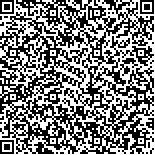| 摘要: |
| 时间序列植被指数在植被遥感监测中发挥着重要的作用,但其往往存在大量噪声影响,在应用之前需要进行时序植被指数重构。耕地植被指数是进行农作物长势监测与估产以及农业生态系统对气候变化响应等研究的重要工具,本研究借助MODIS植被指数产品,以东北三省耕地为研究区域,针对非对称高斯函数拟合(AG)、双Logistic函数拟合(DL)和Savitzky-Golay滤波(SG)三种常见的时序植被指数重构方法,从原始数据质量对时间序列植被指数重构的影响、不同重构方法对原始数据的保真性和基于不同重构方法的耕地生长季长度空间格局等方面进行了对比分析。首先对NDVI及其质量控制数据进行分析,探讨原始数据质量对时序植被指数重构的影响;然后选择若干随机抽样点,从定性和定量两个角度来评价不同方法对时序植被指数的重构效果;最后借助研究区的耕地物候特征,间接对不同的时序植被指数重构方法进行对比。结果表明,在东北三省利用这三种方法进行耕地时序植被指数重构时需要引入质量控制数据,AG拟合和DL拟合在该地区耕地时序植被指数重构时表现相似且比SG滤波更加适宜。 |
| 关键词: 时间序列 植被指数 MODIS 重构方法 |
| DOI:10.7621/cjarrp.1005-9121.20140106 |
| 分类号: |
| 基金项目: |
|
| COMPARISON OF THREE METHODS FOR RECONSTRUCTING TIME SERIES VEGETATION INDEX |
|
Wei Wei, Wu Wenbin, Li Zhengguo, Yang Peng, Hu Qiong, Zhou Qingbo
|
|
Institute of Agricultural Resources and Regional Planning, Chinese Academy of Agricultural Sciences, Beijing100081/Key Laboratory of Agri-informatics, Ministry of Agriculture, Beijing100081
|
| Abstract: |
| Vegetation index time series datasets plays a vital role in vegetation monitoring by remote sensing. However, it is necessary to reconstruct the time series data for the impacts of anomalous values before using them. Vegetation index of cropland is a useful tool for monitoring crop growth and estimating the yield, also for research of agro-ecosystem's responses to climate change. This study compared three frequently-used reconstructing methods which include Asymmetric Guassian function fitting (AG), Double Logistic function fitting (DL) and Savitzky-Golay filtering (SG) in northeast China croplands with MODIS data. The influence of data quality, fidelity performances to original data and spatial patterns of cropland phenology based on different reconstructing methods were analyzed. First, the NDVI and quality control datasets were considered to discuss the impacts of data quality; Second, several random sampling points were picked to evaluate the reconstruct results both qualitatively and quantitatively; Finally, different methods were compared indirectly with the help of cropland phenology of the study area. The results showed that using quality assessment data as auxiliary was recommended when reconstructing cropland vegetation index in northeast China by these methods. The performances of AG and DL were similar and both of them were better than SG. |
| Key words: time series vegetation index MODIS reconstructing method |

